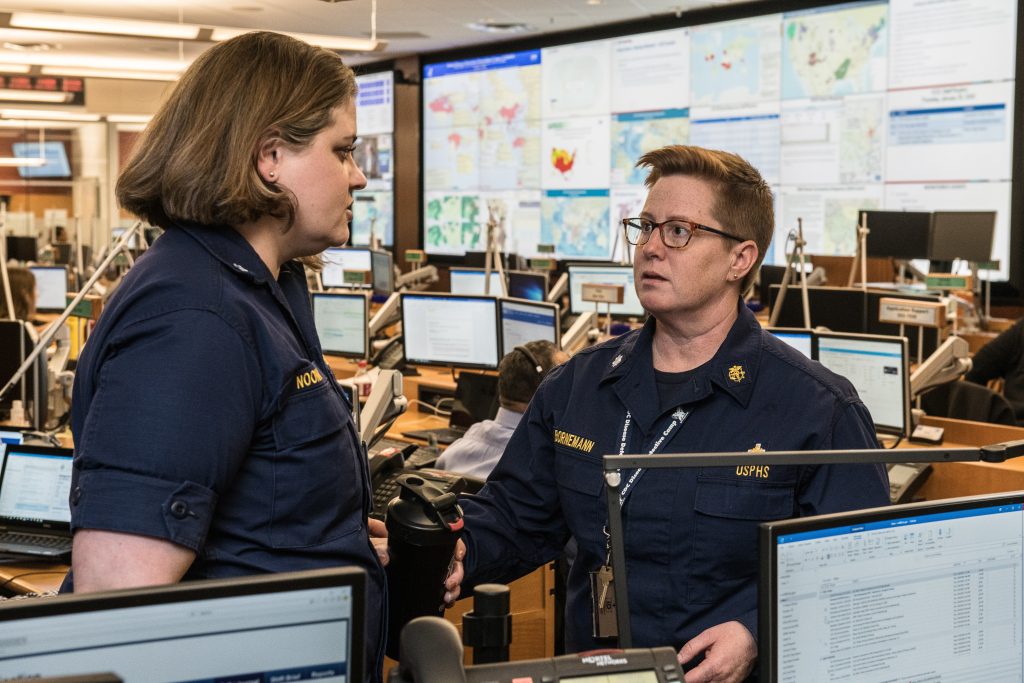Table of Contents Show
In today’s ever-changing and unpredictable world, it is essential to be proactive in ensuring the safety and stability of your organization. That’s where implementing a proactive crisis management plan comes into play. By anticipating potential crises and developing strategic measures to address them, you can effectively mitigate risks, safeguard your reputation, and ensure the resilience of your business. In this article, you will discover the importance of a proactive approach to crisis management and learn valuable insights on how to navigate and overcome challenges before they escalate into full-blown crises. It’s time to take control and prepare for the unexpected, ensuring a smoother path to success for your organization.
Developing an Effective Crisis Management Team
In order to effectively manage a crisis, it is essential to have a dedicated crisis management team in place. This team should consist of key individuals who possess the necessary skills, expertise, and experience to handle various aspects of crisis management.

This image is property of images.unsplash.com.
Identifying Key Team Members
The first step in developing a crisis management team is to identify the key team members. These individuals should be selected based on their knowledge and experience in crisis management, as well as their ability to remain calm and make sound decisions under pressure. It is important to include representatives from different departments or functions within the organization to ensure a well-rounded team.
Defining Roles and Responsibilities
Once the team members have been identified, it is crucial to clearly define their roles and responsibilities. Each team member should have a specific area of expertise or focus, such as communications, logistics, or operations. By clearly defining roles and responsibilities, everyone on the team will know what is expected of them during a crisis, which will help streamline decision-making and response efforts.
Establishing Communication Channels
Effective communication is essential during a crisis, and it is important to establish clear communication channels within the crisis management team. This includes determining how information will be shared, who will be responsible for disseminating information to stakeholders, and how often updates will be provided. By establishing communication channels early on, the team can ensure that everyone has the information they need to effectively manage the crisis.
Identifying Potential Crisis Scenarios
In order to develop an effective crisis management plan, it is important to identify potential crisis scenarios that could impact the organization. This will allow the crisis management team to proactively prepare for and respond to these potential crises.
Conducting Risk Assessment
A risk assessment involves identifying potential risks and evaluating their likelihood and impact on the organization. This can be done by reviewing historical data, conducting relevant research, and consulting with experts in the field. By conducting a comprehensive risk assessment, the organization can identify potential crisis scenarios and prioritize them based on their severity.

This image is property of images.unsplash.com.
Analyzing Past Incidents
Another important step in identifying potential crisis scenarios is to analyze past incidents that have occurred in the organization or industry. This can provide valuable insights into the types of crises that are most likely to occur and the potential impact they could have. By learning from past incidents, the organization can better prepare for future crises and develop more effective response strategies.
Engaging Industry Experts
In addition to conducting internal assessments, it is also beneficial to engage industry experts to gain insights and perspectives on potential crisis scenarios. These experts can provide valuable knowledge and experience that can help the organization develop a more robust crisis management plan. Engaging with industry experts can also help identify emerging risks and trends that may impact the organization in the future.
Creating a Crisis Communication Strategy
Effective communication is critical during a crisis, as it allows the organization to provide timely and accurate information to stakeholders. By developing a comprehensive crisis communication strategy, the organization can ensure that key messages are delivered effectively and efficiently.
Crafting Key Messages
During a crisis, it is important to have key messages that accurately and clearly communicate the organization’s position and response. These messages should be crafted in advance and should address the most likely crisis scenarios. It is important to be honest, transparent, and empathetic in these messages, while also reassuring stakeholders and addressing their concerns. By crafting key messages in advance, the organization can respond more quickly and effectively during a crisis.
Preparing Spokespersons
In addition to crafting key messages, it is important to identify and prepare individuals who will serve as spokespersons during a crisis. These individuals should have strong communication skills and should be trained in delivering key messages effectively. It is also important to provide them with the necessary information and resources to respond to questions and concerns from stakeholders. By preparing spokespeople in advance, the organization can ensure that consistent and accurate information is provided to stakeholders.

This image is property of images.unsplash.com.
Determining Communication Channels
When developing a crisis communication strategy, it is important to determine the most appropriate communication channels for reaching stakeholders. This may include traditional media channels, social media platforms, the organization’s website, or direct communication methods such as email or phone calls. By determining the most effective communication channels in advance, the organization can ensure that information reaches stakeholders quickly and efficiently during a crisis.
Establishing a Crisis Response Framework
A crisis response framework provides a structured approach for managing a crisis and ensures that decisions are made quickly and effectively. By establishing a clear framework, the organization can minimize the impact of a crisis and facilitate the recovery process.
Setting Clear Objectives
When developing a crisis response framework, it is important to set clear objectives that align with the organization’s overall goals and values. These objectives should guide decision-making and response efforts during a crisis. By setting clear objectives, the organization can ensure that all actions taken are in line with its desired outcomes.
Defining Decision-Making Authority
During a crisis, it is important to have a clear decision-making process in place to ensure that decisions are made quickly and effectively. This includes defining decision-making authority and identifying who has the final say in different aspects of crisis management. By clearly defining decision-making authority, the organization can avoid delays and confusion during a crisis.
Establishing Escalation Processes
In some situations, it may be necessary to escalate certain decisions or issues to higher levels of management or stakeholders. By establishing escalation processes in advance, the organization can ensure that issues are escalated appropriately and that necessary actions are taken in a timely manner. This can help prevent the escalation of a crisis and facilitate a more effective response.
Developing an Incident Management System
An incident management system provides a structured approach for responding to incidents and ensures that resources are allocated effectively. By developing an incident management system, the organization can enhance its ability to respond to and recover from a crisis.

Establishing Incident Response Teams
When developing an incident management system, it is important to establish incident response teams that are responsible for specific aspects of crisis management. These teams should include individuals with the necessary skills and expertise to effectively manage different types of incidents. By establishing incident response teams, the organization can ensure a coordinated and efficient response to a crisis.
Implementing Incident Reporting Procedures
In order to effectively manage incidents, it is important to have a system in place for reporting and tracking incidents. This includes establishing incident reporting procedures that outline how incidents should be reported, who should be notified, and what information should be included in incident reports. By implementing incident reporting procedures, the organization can ensure that all incidents are properly documented and addressed.
Monitoring and Evaluating Incident Responses
After a crisis has occurred, it is important to monitor and evaluate the organization’s response to identify areas for improvement. This includes collecting data and feedback on the incident response, analyzing the effectiveness of the response, and identifying any gaps or weaknesses in the incident management system. By monitoring and evaluating incident responses, the organization can continuously improve its crisis management capabilities.
Training and Educating Employees
In order to effectively respond to a crisis, it is important to train and educate employees on crisis management protocols and procedures. This will ensure that everyone in the organization is prepared to respond appropriately in the event of a crisis.
Providing Crisis Awareness Training
Crisis awareness training involves educating employees on the types of crises that could impact the organization and how to recognize the signs of a crisis. This training should also include information on how to respond to a crisis, who to contact, and where to find additional resources. By providing crisis awareness training, the organization can ensure that employees are prepared to respond effectively in a crisis.

Conducting Simulations and Drills
Simulations and drills provide an opportunity for employees to practice their crisis response skills in a controlled environment. These exercises can simulate different crisis scenarios and allow employees to test their knowledge and skills. By conducting simulations and drills, the organization can identify any gaps or weaknesses in its crisis response capabilities and provide additional training or resources as needed.
Educating Employees on Crisis Protocols
In addition to crisis awareness training and simulations, it is important to educate employees on specific crisis protocols and procedures. This includes providing detailed information on the steps to take during a crisis, who to contact, and what resources are available. By educating employees on crisis protocols, the organization can ensure that everyone knows their role and responsibilities during a crisis.
Creating Documentation and Procedures
In order to effectively manage a crisis, it is important to have documentation and procedures in place that outline the organization’s crisis management plan and standard operating procedures.
Developing a Crisis Management Plan
A crisis management plan provides a roadmap for how the organization will respond to and recover from a crisis. This includes identifying key team members, establishing communication channels, and outlining response strategies for different crisis scenarios. By developing a comprehensive crisis management plan, the organization can ensure a coordinated and effective response to a crisis.
Creating Standard Operating Procedures
Standard operating procedures outline the specific steps that should be taken during a crisis, such as who to contact, how to secure the premises, and how to communicate with stakeholders. By creating standard operating procedures, the organization can ensure that everyone knows what to do during a crisis and that response efforts are consistent and effective.
Maintaining an Updated Crisis Response Manual
A crisis response manual should be regularly updated to reflect changes in the organization’s structure, personnel, or operating procedures. This manual should include all relevant information and resources related to crisis management, including contact information, key messages, and protocols. By maintaining an updated crisis response manual, the organization can ensure that everyone has access to the most current information and resources during a crisis.
Building Relationships with External Stakeholders
During a crisis, it is important to have strong relationships with external stakeholders, such as government agencies, media outlets, and suppliers. These relationships can help facilitate a more effective and coordinated response to a crisis.
Engaging with Government Agencies
Government agencies can provide valuable resources and support during a crisis, such as financial assistance or regulatory guidance. By engaging with government agencies before a crisis occurs, the organization can establish relationships and partnerships that can be leveraged during a crisis. This includes participating in relevant industry associations, attending meetings or conferences, and establishing regular communication channels with government representatives.
Collaborating with Media Outlets
The media plays a crucial role in shaping public perception during a crisis, and it is important to have a good relationship with media outlets. By proactively engaging with media outlets, providing accurate and timely information, and being transparent and open in communication, the organization can maintain control over its narrative and build trust with the public. This includes establishing media contacts, providing media training to spokespersons, and actively monitoring and responding to media inquiries.
Establishing Partnerships with Suppliers and Competitors
In some crisis situations, it may be necessary to rely on suppliers or competitors for support or resources. By establishing partnerships and relationships with suppliers and competitors before a crisis occurs, the organization can ensure a more collaborative and coordinated response. This includes identifying backup suppliers or vendors, participating in industry collaborations or alliances, and maintaining open lines of communication with competitors.
Implementing Technology Solutions
Technology can play a critical role in crisis management by providing real-time information, facilitating communication, and streamlining response efforts. By implementing technology solutions, the organization can enhance its crisis management capabilities.
Utilizing Crisis Management Software
Crisis management software provides a centralized platform for managing and coordinating crisis response efforts. This software can automate processes, provide real-time updates and alerts, and facilitate communication and collaboration among team members. By utilizing crisis management software, the organization can streamline response efforts, improve decision-making, and enhance coordination during a crisis.
Implementing Real-time Monitoring Tools
Real-time monitoring tools allow the organization to monitor and track social media, news outlets, and other sources of information for potential crisis situations or public sentiment. These tools can provide early warning alerts, identify emerging issues, and help the organization respond quickly and appropriately. By implementing real-time monitoring tools, the organization can stay informed and respond proactively to potential crises.
Leveraging Social Media Listening Platforms
Social media platforms can play a significant role in crisis communication, as they provide a way to reach and engage with stakeholders in real-time. By leveraging social media listening platforms, the organization can monitor and analyze social media conversations, identify issues or concerns, and respond quickly and appropriately. This can help the organization manage its reputation, address misinformation, and communicate effectively during a crisis.
Conducting Post-Crisis Evaluation and Review
After a crisis has occurred, it is important to conduct a thorough evaluation and review of the organization’s response. This allows the organization to identify areas for improvement and make necessary adjustments to its crisis management plan.
Analyzing Response Effectiveness
The first step in conducting a post-crisis evaluation is to analyze the effectiveness of the organization’s response. This includes assessing how well the crisis management team performed, how quickly and effectively decisions were made, and how well the organization communicated with stakeholders. By analyzing response effectiveness, the organization can identify strengths and weaknesses in its crisis management capabilities.
Identifying Lessons Learned
During a crisis, there are often valuable lessons to be learned that can inform future response efforts. It is important to identify and document these lessons, including what worked well and what could be improved. By identifying lessons learned, the organization can continuously improve its crisis management capabilities and be better prepared for future crises.
Updating the Crisis Management Plan
Based on the findings from the post-crisis evaluation and review, it is important to update the organization’s crisis management plan. This includes incorporating any lessons learned, revising response strategies or protocols, and identifying any additional resources or training that may be needed. By updating the crisis management plan, the organization can ensure that it remains effective and relevant in the face of evolving crisis scenarios.
In conclusion, developing an effective crisis management plan requires a comprehensive approach that includes identifying key team members, identifying potential crisis scenarios, creating a crisis communication strategy, establishing a crisis response framework, developing an incident management system, training and educating employees, creating documentation and procedures, building relationships with external stakeholders, implementing technology solutions, and conducting post-crisis evaluation and review. By following these steps and continuously improving and updating the crisis management plan, organizations can be better prepared to effectively respond to and recover from crises.





